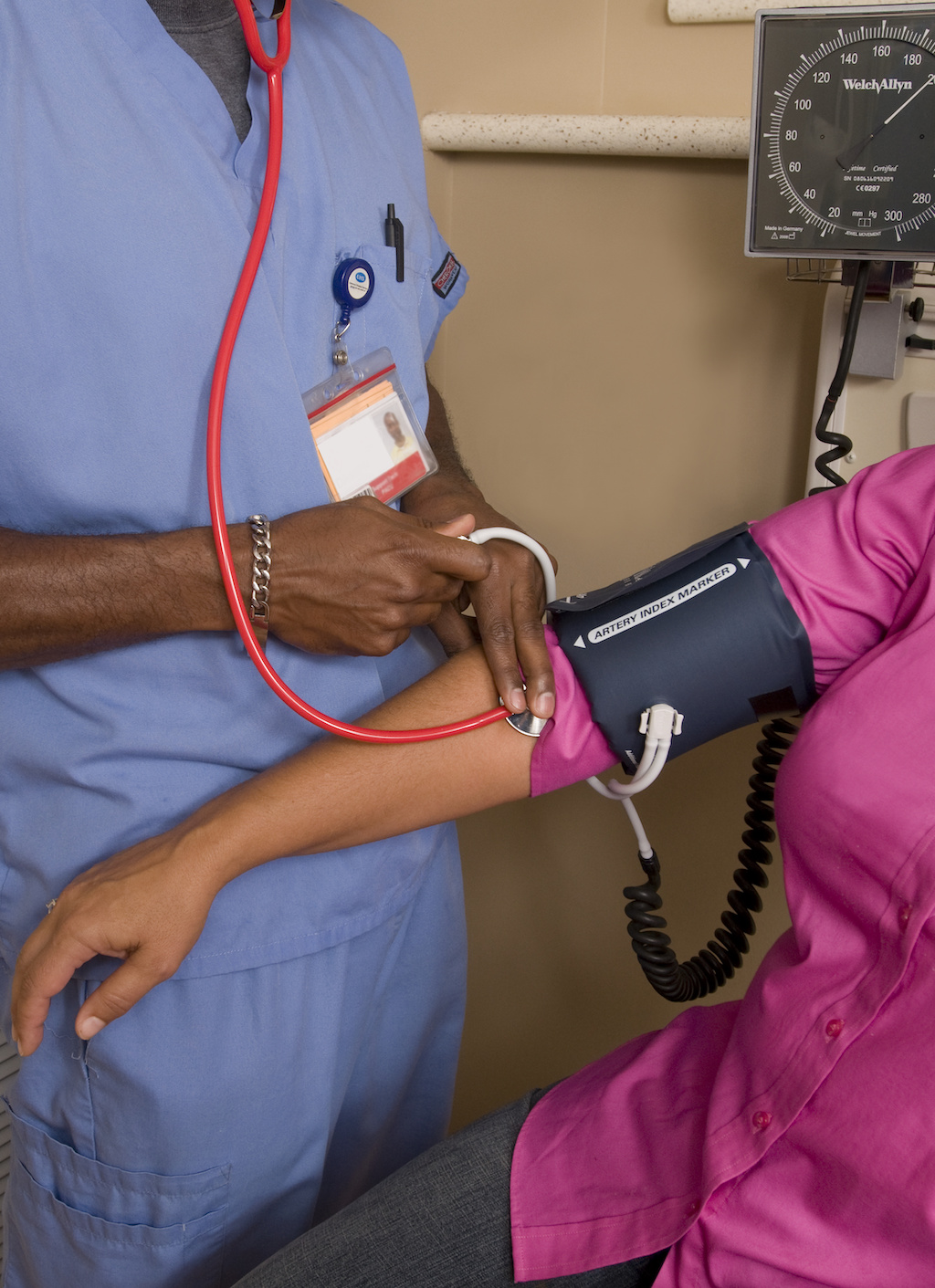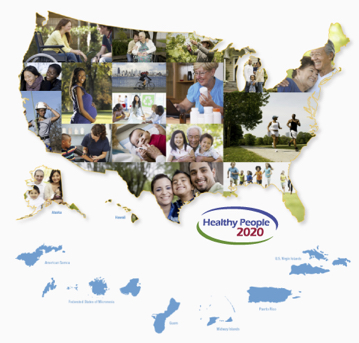1.6 Physical Activity in the United States: Trends
How is physical activity adherence monitored in the United States, and are the physical activity guidelines being met by the general population? These are important questions which require in-depth answers, considering the diverse needs, behaviors, and abilities of each individual. First, several key terms, concepts, and current trends will be addressed.
Physical Activity Epidemiology: The study of how a physical activity behavior is distributed in various populations, including what factors influence or determine this distribution pattern (Dishman, Heath, & Lee, 2004).
… the majority of the United States population (more than 80%) does not meet physical activity guidelines and recommendations.Several national surveys which track and monitor the physical activity habits of adults include: National Health Interview Survey (NHIS), the National Health and Nutrition Examination Survey (NHANES), and the Behavioral Risk Surveillance System (BRFSS) (Pleis, Lucas, & Ward, 2009; National Center for Health Statistics (US), 2011). Results from these national surveys indicate the majority of the United States population (more than 80%) does not meet physical activity guidelines and recommendations (Pleis, Lucas, & Ward, 2009; National Center for Health Statistics (US), 2011). Additionally, current statistics indicate a high prevalence of overweight and obesity in the United States (Centers for Disease Control and Prevention, 2016). More than a third of the adult population in the United States is obese, and many suffer from additional obesity-related conditions such as: heart disease, stroke, type 2 diabetes, and specific types of cancer (Pleis, Lucas, & Ward, 2009; National Center for Health Statistics (US), 2011; Centers for Disease Control and Prevention, 2016; Benjamin, 2010).

In response to the low engagement of the adult population in physical activity endeavors and the subsequent trend in increases in obesity, many public health institutions have created programs with clearly defined goals for enhancing physical activity.
Healthy People 2020: A government initiative which aims to “improve health, fitness, and quality of life through daily physical activity.” Several strategies and interventions provided by Healthy People 2020 focus on investing in building physical activity-friendly structures in the environment (i.e. sidewalks and biking trails), and altering local legislative policies to improve opportunities for exercise in various United States communities (Office of Disease Prevention and Health Promotion, 2016; Gordon-Larsen, Nelson, Page, & Popkin, 2006).

In particular, Healthy People 2020 strives to reduce health disparities (lack of equal access and opportunity) which exist for physical activity participation in the United States. Several groups which suffer these disparities include the socio-economically disadvantaged, peoples of color and minority groups, the elderly population, female adolescents and individuals who identify as gay, bisexual, or transgender.
The above information may be accessed at: https://www.healthypeople.gov/
Comprehension check:
Visit the Healthy People 2020 website and identify 3 separate health disparities for leading health indicators. Are any of these health indicators or health disparities associated with participation in physical activity, or lack thereof?
Works Cited
Benjamin, R. M. (2010). The Surgeon General’s vision for a healthy and fit nation. Public health reports, 125(4), 514.
Calzo, J. P., Roberts, A. L., Corliss, H. L., Blood, E. A., Kroshus, E., & Austin, S. B. (2014). Physical activity disparities in heterosexual and sexual minority youth ages 12–22 years old: roles of childhood gender nonconformity and athletic self-esteem. Annals of behavioral medicine, 47(1), 17-27.
Centers for Disease Control and Prevention (2016). Overweight and obesity: Adult obesity facts. Retrieved from https://www.cdc.gov/obesity/data/adult.html
Crawford, P. B., Sabry, Z. I., & Liu, K. (2002). Decline in physical activity in black girls and white girls during adolescence. New England Journal of Medicine, 347(10), 709-715.
Crespo, C. J. (2000). Encouraging physical activity in minorities: eliminating disparities by 2010. The Physician and sportsmedicine, 28(10), 36-51.
Dishman, R., Heath, G., & Lee, I. M. (2004). Physical activity epidemiology. Human Kinetics.
Fredriksen-Goldsen, K. I., Emlet, C. A., Kim, H. J., Muraco, A., Erosheva, E. A., Goldsen, J., &
Gordon-Larsen, P., Nelson, M. C., Page, P., & Popkin, B. M. (2006). Inequality in the built environment underlies key health disparities in physical activity and obesity. Pediatrics, 117(2), 417-424.
Hoy-Ellis, C. P. (2013). The physical and mental health of lesbian, gay male, and bisexual (LGB) older adults: The role of key health indicators and risk and protective factors. The Gerontologist, 53(4), 664-675.
Keadle, S. K., McKinnon, R., Graubard, B. I., & Troiano, R. P. (2016). Prevalence and trends in physical activity among older adults in the United States: A comparison across three national surveys. Preventive Medicine.
Kimm, S. Y., Glynn, N. W., Kriska, A. M., Barton, B. A., Kronsberg, S. S., Daniels, S. R.,
National Center for Health Statistics (US). (2011). Healthy people 2010: Final review. Government Printing Office.
Office of Disease Prevention and Health Promotion (2016). Health people: Physical activity. Retrieved from https://www.healthypeople.gov/2020/topics-objectives/topic/physical-activity
Pleis, J. R., Lucas, J. W., & Ward, B. W. (2009). Summary health statistics for US adults: National Health Interview Survey, 2008. Vital and health statistics. Series 10, Data from the National Health Survey, (242), 1-157.

